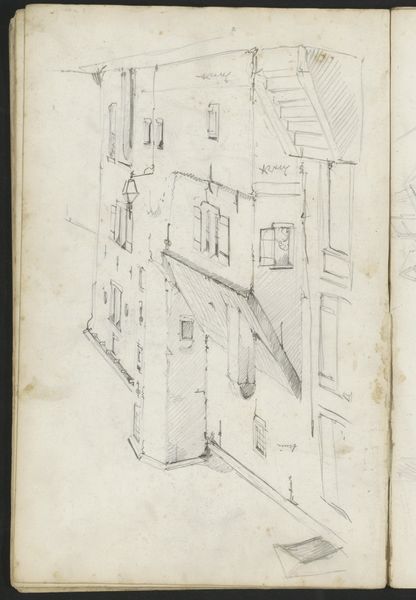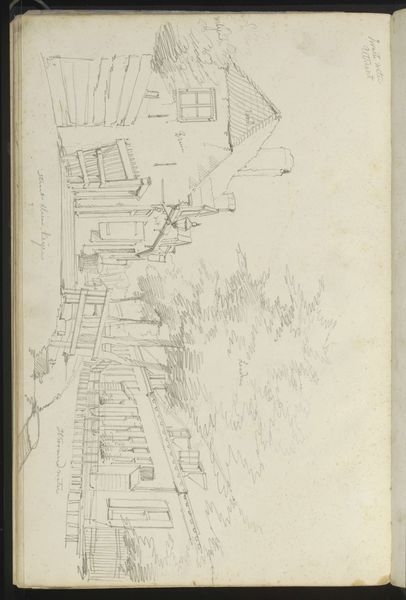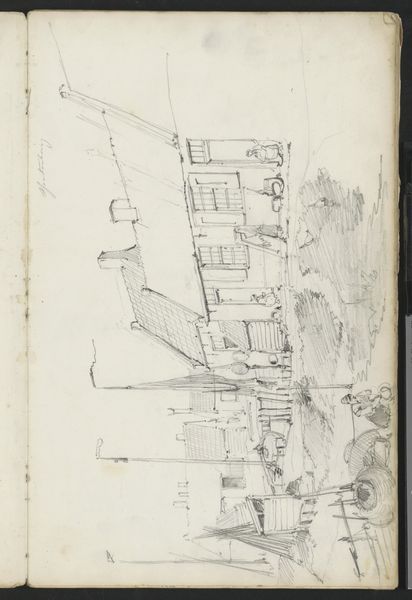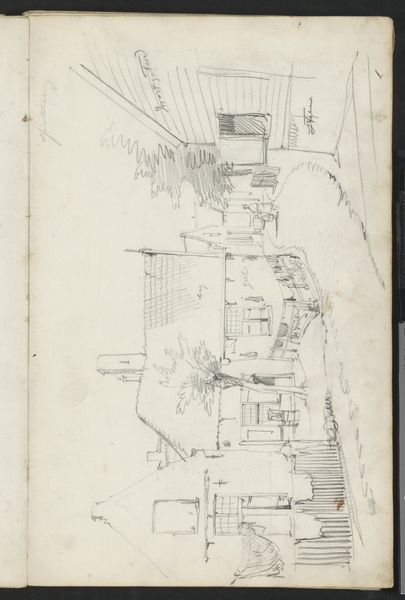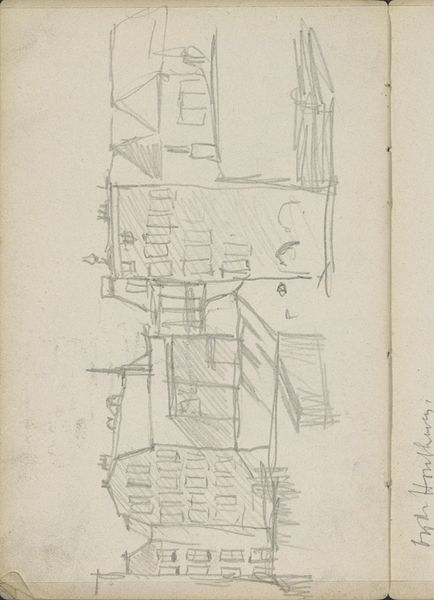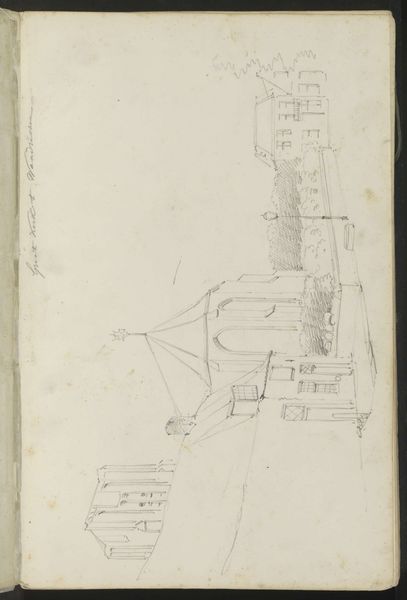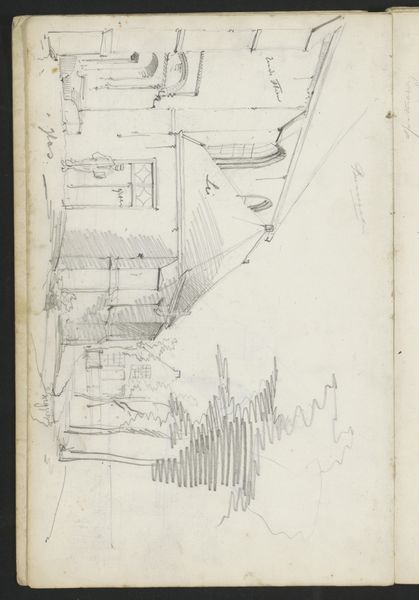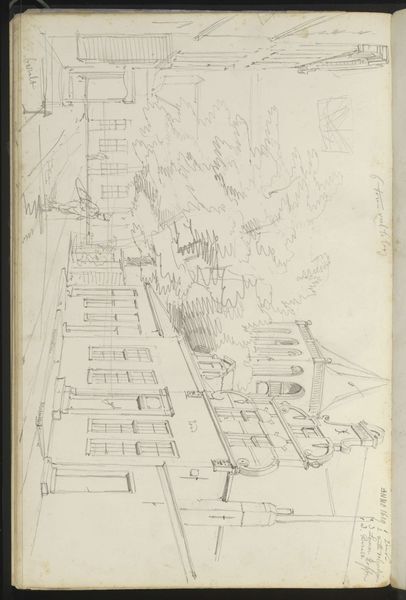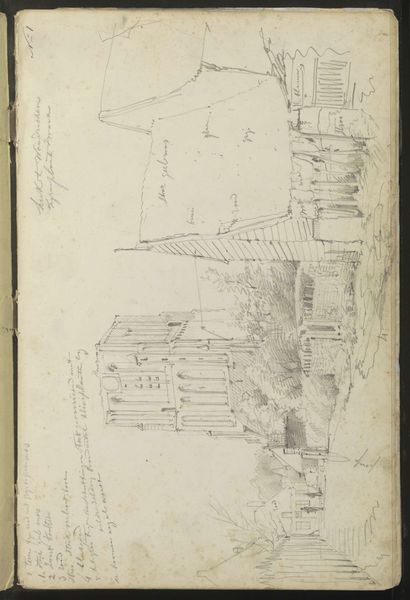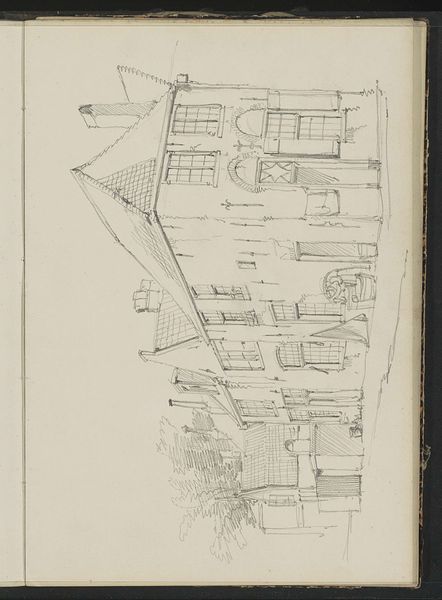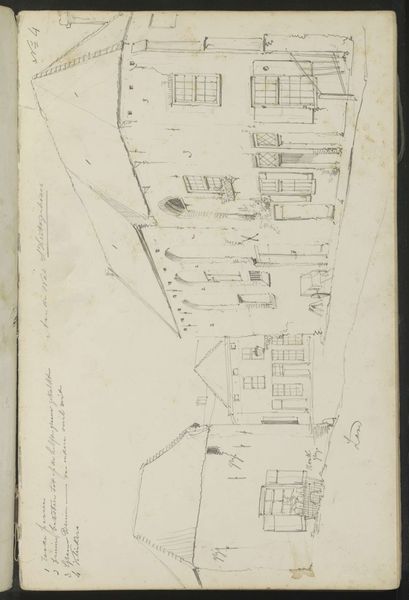
drawing, pencil
#
drawing
#
pencil
#
cityscape
#
street
#
realism
Copyright: Rijks Museum: Open Domain
Editor: So, this is Willem Koekkoek's "Straat buiten de Binnenpoort te Culemborg," a pencil drawing made sometime between 1849 and 1895. It's a detailed cityscape, almost photographic in its precision. What strikes me is the focus on the buildings themselves. How do you interpret this work? Curator: Looking at this drawing through a materialist lens, I'm drawn to the process of its creation. The use of pencil, a readily available and relatively inexpensive material, speaks to the accessibility of artmaking and to the everyday realities of the artist. Consider the labor involved in producing this level of detail, line after line capturing the facades of these buildings. It really shows us how much the labor that went into making these drawings is linked to social classes and its means. What do you make of the level of detail? Editor: It's amazing, the way he captures the textures of the brick and wood. Did that incredible attention to detail also serve any purpose related to the art market or economy? Curator: Absolutely. The realism style, with its emphasis on accurate representation, was highly valued by the art market. Patrons appreciated art that reflected the tangible world, solidifying the social order they thrived in. This drawing becomes not just a depiction of Culemborg, but also a commodity, reflecting the material culture of the time and the consumption of art by a certain social class. Does that connection make sense to you? Editor: It does! It shifts the focus from just the artistic skill to the broader economic forces at play. I never thought about it that way. Curator: Exactly. Considering the means of production – the pencil, paper, the artist’s labor – helps us understand how art is embedded in the material conditions of its time. What's important here is that this form of art helped support the material and cultural ideology of the classes and people that valued this labor the most. Editor: This has completely changed how I see the drawing. I appreciate the material connection between the art and society much more. Curator: Precisely. It makes us consider not just what is depicted, but also how and why.
Comments
No comments
Be the first to comment and join the conversation on the ultimate creative platform.
